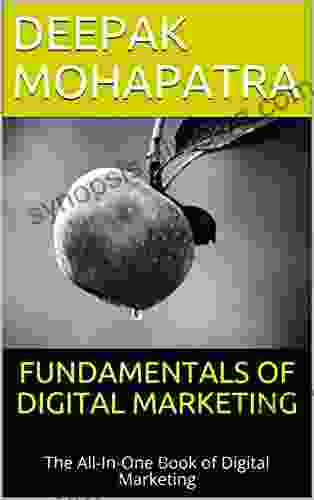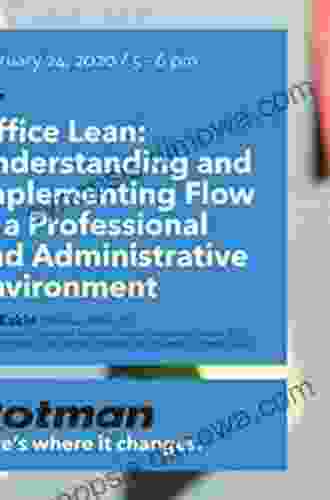Unlocking Peak Performance and Productivity: Understanding and Implementing Flow in Professional and Administrative Roles

In the fast-paced and demanding world of professional and administrative work, it's essential to find ways to maximize efficiency, creativity, and job satisfaction. One powerful tool that can help us achieve these goals is flow. Flow is a state of complete absorption and engagement in a task, where time seems to fly and we experience a deep sense of purpose and fulfillment. When we're in flow, we work seamlessly, our minds are sharp, and we produce our best results.
This comprehensive article explores the concept of flow, its benefits in professional and administrative contexts, and proven strategies for fostering flow in our daily work. By understanding and implementing flow, we can unlock our full potential and thrive in our professional endeavors.
Flow, also known as the flow state or flow experience, is a mental state characterized by intense engagement and focus on a task. When we're in flow, we feel in control, our minds are clear, and we're fully absorbed in the present moment. Time seems to fly by, and we experience a sense of euphoria and accomplishment.
4 out of 5
| Language | : | English |
| File size | : | 13436 KB |
| Screen Reader | : | Supported |
| Print length | : | 276 pages |
Flow was first described by psychologist Mihaly Csikszentmihalyi in his book "Flow: The Psychology of Optimal Experience." Csikszentmihalyi identified nine key characteristics of flow:
- Clear goals and feedback: We know exactly what we're working towards and receive immediate feedback on our progress.
- High challenge and high skill: The task is challenging enough to be engaging, but not so difficult that it becomes frustrating.
- Concentration and focus: We're fully absorbed in the present moment and tuned into the task at hand.
- Sense of control: We feel in command of our actions and the situation.
- Loss of self: Our sense of self fades into the background, and we become one with the task.
- Automatic behavior: Our actions flow effortlessly, without conscious effort.
- Time distortion: Time seems to fly by or even stop altogether.
- Intense enjoyment: We experience a deep sense of pleasure and satisfaction.
- Feeling of accomplishment: We emerge from flow with a sense of pride and fulfillment.
Flow has numerous benefits for individuals working in professional and administrative roles. These benefits include:
- Increased productivity: When we're in flow, we work faster, more efficiently, and with fewer errors.
- Enhanced creativity: Flow can spark innovative thinking and problem-solving abilities.
- Improved job satisfaction: People who experience flow at work are more likely to be engaged and motivated.
- Reduced stress and burnout: Flow can help us manage stress and prevent burnout by providing a sense of control and accomplishment.
- Improved physical and mental health: Studies have shown that flow can boost our immune system and improve our overall well-being.
While flow may seem like an elusive state, there are several practical strategies we can use to foster it in our professional and administrative work. These strategies include:
- Set clear goals: Define your goals clearly and break them down into smaller, manageable steps.
- Find the right level of challenge: Choose tasks that are challenging enough to be engaging but not so difficult that they become frustrating.
- Create a distraction-free environment: Eliminate distractions and create a quiet and comfortable workspace.
- Block out time for focused work: Schedule specific times in your day to focus on deep work without interruptions.
- Take breaks: Regular breaks can help prevent burnout and refresh your mind.
- Practice mindfulness: Pay attention to the present moment and focus on the task at hand.
- Find a sense of purpose: Connect your work to your values and beliefs to create a sense of meaning and purpose.
- Cultivate positive emotions: Positive emotions can increase our flow potential. Surround yourself with supportive colleagues and engage in activities that bring you joy.
To illustrate the practical application of flow-fostering strategies, consider the example of an administrative office. The office was experiencing low productivity and high turnover among its staff. To address these issues, the office implemented a series of flow-promoting initiatives, including:
- Goal-setting workshops: Employees were trained on how to set clear and achievable goals.
- Task prioritization training: Employees learned how to prioritize tasks based on importance and urgency.
- Quiet workspaces: Designated quiet zones were created in the office to provide employees with a distraction-free environment.
- Time blocking: Employees were encouraged to block out time in their calendars for focused work.
- Regular breaks: Employees were encouraged to take regular breaks throughout the day to prevent burnout.
As a result of these initiatives, the office experienced a significant increase in productivity and a decrease in employee turnover. Employees reported experiencing greater job satisfaction, reduced stress, and a renewed sense of purpose in their work.
Flow is a powerful tool that can help us unlock our full potential in professional and administrative roles. By understanding the concept of flow, its benefits, and proven strategies for fostering it, we can create a work environment that promotes productivity, creativity, job satisfaction, and overall well-being. By embracing flow, we can experience the joy of meaningful work and achieve our professional and personal goals.
This article has provided a comprehensive overview of flow, with a particular focus on its relevance in professional and administrative contexts. For further exploration of this topic, I recommend the following resources:
- [Flow: The Psychology of Optimal Experience](https://www.Our Book Library.com/Flow-Psychology-Optimal-Experience-Classics/dp/0061562072) by Mihaly Csikszentmihalyi
- Finding Flow in Work and Life by Mind Tools
- [The Art of Flow: A Practical Guide to Finding Your Flow State](https://www.Our Book Library.com/Art-Flow-Practical-Finding-Finding/dp/1534967955) by Susannah Conway
4 out of 5
| Language | : | English |
| File size | : | 13436 KB |
| Screen Reader | : | Supported |
| Print length | : | 276 pages |
Do you want to contribute by writing guest posts on this blog?
Please contact us and send us a resume of previous articles that you have written.
 Book
Book Novel
Novel Page
Page Chapter
Chapter Text
Text Story
Story Genre
Genre Reader
Reader Library
Library Paperback
Paperback E-book
E-book Magazine
Magazine Newspaper
Newspaper Paragraph
Paragraph Sentence
Sentence Bookmark
Bookmark Shelf
Shelf Glossary
Glossary Bibliography
Bibliography Foreword
Foreword Preface
Preface Synopsis
Synopsis Annotation
Annotation Footnote
Footnote Manuscript
Manuscript Scroll
Scroll Codex
Codex Tome
Tome Bestseller
Bestseller Classics
Classics Library card
Library card Narrative
Narrative Biography
Biography Autobiography
Autobiography Memoir
Memoir Reference
Reference Encyclopedia
Encyclopedia David Orr
David Orr Deann Kruempel
Deann Kruempel Gregory J Chaitin
Gregory J Chaitin Deborah D Shain
Deborah D Shain David Cobham
David Cobham Deborah Bouziden
Deborah Bouziden David Stewart White
David Stewart White David Lee
David Lee Dean Lewis
Dean Lewis David Weitz
David Weitz David Stephenson
David Stephenson Deborah Iida
Deborah Iida David Micus
David Micus Lee Mj Elias
Lee Mj Elias David Hatcher Childress
David Hatcher Childress David Patneaude
David Patneaude David Rappoport
David Rappoport Patrizio Kroyani
Patrizio Kroyani David Mager
David Mager Stephen Moss
Stephen Moss
Light bulbAdvertise smarter! Our strategic ad space ensures maximum exposure. Reserve your spot today!

 Douglas AdamsAstro Girls Celestial Bond: An Enchanting Tale of Science, Friendship, and...
Douglas AdamsAstro Girls Celestial Bond: An Enchanting Tale of Science, Friendship, and... Robert BrowningFollow ·12.5k
Robert BrowningFollow ·12.5k D'Angelo CarterFollow ·13.2k
D'Angelo CarterFollow ·13.2k Eddie PowellFollow ·10k
Eddie PowellFollow ·10k Stephen FosterFollow ·2.3k
Stephen FosterFollow ·2.3k Tyrone PowellFollow ·19.8k
Tyrone PowellFollow ·19.8k Cole PowellFollow ·11.3k
Cole PowellFollow ·11.3k Hugh BellFollow ·9.4k
Hugh BellFollow ·9.4k Graham BlairFollow ·2.7k
Graham BlairFollow ·2.7k

 Aron Cox
Aron CoxMastering Project Management: The Ultimate Guide to...
In today's competitive...

 Dominic Simmons
Dominic SimmonsLet's Build Sue Fliess: Unleash the Polychrome Master...
Chapter 1: The...

 Mason Powell
Mason PowellMaster the Digital Marketing Landscape: Fundamentals of...
In the age of digital...

 Aubrey Blair
Aubrey BlairUncover the Secrets of Ancient Blades and Enchanting...
Embark on an Enchanting Journey into the...

 Shannon Simmons
Shannon SimmonsUnleash the Spooktacular with Spooky Crochet Tutorials...
Prepare to be spooked...

 Cade Simmons
Cade SimmonsImmerse Your Little Ones in a World of Enchantment with...
Nursery rhymes have forever ignited the...
4 out of 5
| Language | : | English |
| File size | : | 13436 KB |
| Screen Reader | : | Supported |
| Print length | : | 276 pages |










